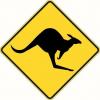Hi Neanderthals,
I have an old back saw which has a slight curve. A while ago I removed the back, cleaned the groove, put the saw in again and, yay, perfectly straight!
Then I attached the handle again and what do you know, there's the bend again! So somehow the screws must be tensioning the blade somehow.
How do I correct this, or rather how do I figure out exactly what the problem is?
Bram





 Reply With Quote
Reply With Quote



